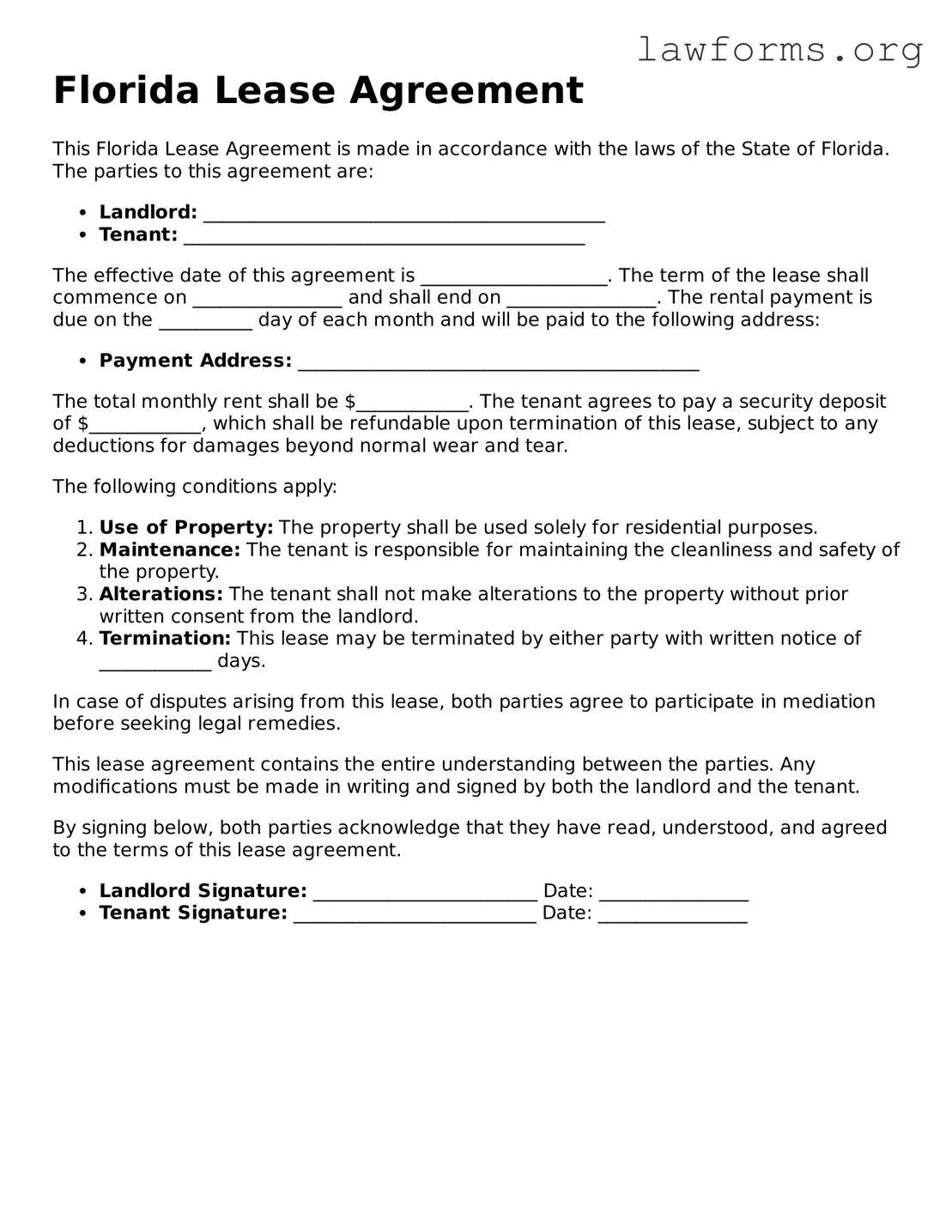Florida Lease Agreement
This Florida Lease Agreement is made in accordance with the laws of the State of Florida. The parties to this agreement are:
- Landlord: ___________________________________________
- Tenant: ___________________________________________
The effective date of this agreement is ____________________. The term of the lease shall commence on ________________ and shall end on ________________. The rental payment is due on the __________ day of each month and will be paid to the following address:
- Payment Address: ___________________________________________
The total monthly rent shall be $____________. The tenant agrees to pay a security deposit of $____________, which shall be refundable upon termination of this lease, subject to any deductions for damages beyond normal wear and tear.
The following conditions apply:
- Use of Property: The property shall be used solely for residential purposes.
- Maintenance: The tenant is responsible for maintaining the cleanliness and safety of the property.
- Alterations: The tenant shall not make alterations to the property without prior written consent from the landlord.
- Termination: This lease may be terminated by either party with written notice of ____________ days.
In case of disputes arising from this lease, both parties agree to participate in mediation before seeking legal remedies.
This lease agreement contains the entire understanding between the parties. Any modifications must be made in writing and signed by both the landlord and the tenant.
By signing below, both parties acknowledge that they have read, understood, and agreed to the terms of this lease agreement.
- Landlord Signature: ________________________ Date: ________________
- Tenant Signature: __________________________ Date: ________________
